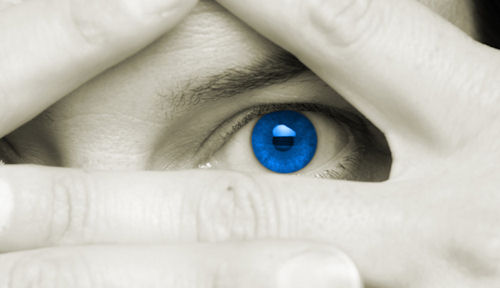
We have all seen the futuristic thrillers that use high-tech eye scanning identification systems but nowadays the technology does exist to use them in real life. A greater number of high security establishments have begun to use iris recognition for identification and security systems.
How does it work?
The iris is the colored part of the eye that forms a ring around the black pupil that is responsible for contractions of the pupil to let in more or less light. It is also the only internal organ that is visible from outside the body. Like a fingerprint, the colors and patterns of the iris are completely unique to each individual, and this unique texture usually doesn’t change throughout a person’s lifetime. Because of these characteristics a scan of the iris is a highly reliable source of personal identification.
Iris recognition measures these unique patterns and textures through a specialized camera which captures an image of the iris from about 3-10 inches away. Iris recognition is considered one of the most accurate forms of biometrics (the use of body measurements for identity checks) because it is non-intrusive, fast and accurate. As a comparison, while fingerprint identification uses 40 unique characteristics, the iris has 256 unique markers.
In order for iris recognition to work, your iris first needs to be scanned and enrolled into the system so it can recognize your identity. Enrollment requires your eyes to be photographed using both ordinary and infrared light which helps to highlight the unique patterns present in the iris. These digital photographs then go through a specialized analysis that identifies the unique features (the 256 markers mentioned above) and then stores the information as a 512-digit number (your IrisCode®) along with your name and personal details into a database. This all happens within a few minutes.
Once you are in the system, you simply need to stand in front of the iris scanner and within minutes your iris can be verified.
Limitations of Iris Scanning
The markers on your iris usually remain unchanged throughout your lifetime except in cases of extreme injury to the eye, inflammation (such as iritis) or changes due to cancers. Additionally, certain surgeries for glaucoma involve removing part of the iris (iridectomy) or using lasers to put holes in the iris (iridotomy) which would also change the iris pattern. Lastly, certain tinted contact lenses could be a complication with iris scans because some of them have an artificial iris pattern imprinted on them. Nevertheless, iris scanning is still considered to be the most accurate and effective form of biometric identification.
Iris scanning is already being used in airports, military and prison institutions, high security government and corporate institutions and even at ATM and bank tellers. Looking into the future, it is likely we will see much more of this technology in common use.
